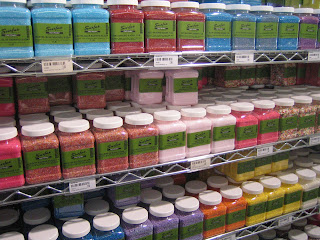
The June Daring Bakers' challenge was hosted by Jasmine of Confessions of a Cardamom Addict and Annemarie of Ambrosia and Nectar. They chose a Traditional (UK) Bakewell Tart... er... pudding that was inspired by a rich baking history dating back to the 1800's in England.
One of the reasons I like to participate in the Daring Bakers’ Challenges each month is each challenge offers me a chance to learn something new. Even if the item itself is not a challenge for me to make, I generally take away something from the experience.
And this month’s challenge is no exception.
Although a common treat in England, I had never heard of a Bakewell Tart before this challenge. The three elements of the tart were not hard to master:
Sweet Shortcut Pastry
Jam (purchased)
Frangipane (a filling made from almonds)
But I did find the legend and lore behind the Bakewell Tart to be fascinating.
First, it should be noted that because the Bakewell Tart is British in origin it is also referred to as a pudding since that is the British term for all of their desserts. What Americans call pudding the British call banana custard.
Like Tollhouse cookies and puff pastry, the Bakewell Tart was also created quite by accident.
Although there are several versions of the legend of how a Bakewell Tart was created, most people agree on the basic facts that sometime in the 1800s in the village of Bakewell in the town of Derbyshire (England), a landlady of one of the inns asked her cook to produce a pudding for her guests. Either her instructions could have been clearer or the cook should have paid better attention to what she said because what the cook made was not what the landlady asked for. The cook spread the frangipane on top of the jam rather than the other way around.
Today, several different versions of a Bakewell Tart exist including the popular version found in grocery stores throughout England that sport a thick sugary icing with a glazed cherry on top.

This origin of the Bakewell Tart is interesting but here are a few more tidbits surrounding this pastry that I thought were even more memorable:
•Murder
In 1974 17-year-old Stephen Downing was convicted of killing Wendy Sewell in the town of Bakewell. His conviction was overturned in 2002 thanks to the efforts of journalist Don Hale. The case is thought to be the longest miscarriage of justice in British history. The story became a BBC TV drama and Don Hale also published a book about it.

•Insults
Because of this murder case, there now exists this not so funny insult: “The Bakewell pudding is a dessert. The Bakewell tart is that girl over there.” It seems Wendy Sewell was a bit promiscuous.

•Regulation
Bakers of the Bakewell Tart/Pudding have aspirations similar to many winemakers: In 2008, several bakers in Bakewell asked the European Union for sanctions to be placed on what ingredients can be used and where they can be made before a Bakewell Tart/Pudding can be called by that name.
•Promotion
In March 2009 the owner of holiday cottages for rent in the village of Bakewell used the tarts to promote his cottages. Ten tarts contained a gold key. The lucky ten were invited to a grand finale where one key unlocked a cottage. The winner is the owner of the cottage.

•Politics
The British celebrity chef Jamie Oliver served Bakewell tarts to the G20 leaders assembled in London in April 2009. I wonder what our health conscious President Obama thought of it!
But I guess what I find the most interesting is the enduring appeal of the Bakewell Tart and how over the years it has become part of the national identity of the British people – similar to how apple pie is to Americans or kolaches to the Czech people, or the perfect macaron to the French.
And isn't that the goal of all bakers -- to have their creations endure beyond the last bite?
















